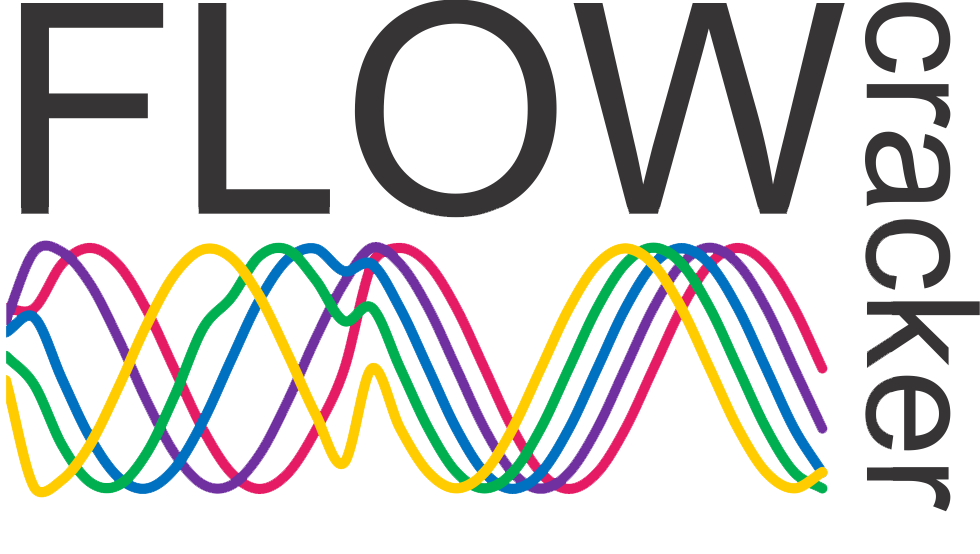

For the past two decades, Agile teams have sharpened their skills in user story writing, estimation, and backlog refinement. But a new team skill is emerging—one that’s not (yet) in any of the Frameworks. That skill is prompting.
Once the domain of data scientists and AI researchers, prompting—formulating clear and purposeful inputs to Large Language Models (LLMs) like ChatGPT—is quickly becoming a differentiator for modern Agile teams. It’s no longer just about what the team builds; it’s also about how they think, co-create, and accelerate using AI tools.
Whether you’re a Scrum Master facilitating refinement, a Product Owner drafting acceptance criteria, or a developer writing test cases, prompting is the new literacy for collaborative flow.
Prompting Joins the Team Toolkit – A New Skill for Flow-First Teams
Ask any Agile team what slows them down, and you won’t hear “lack of tools.” What you’ll often hear is: “We’re stuck refining the stories,” or “We don’t know how to translate the problem into something the team can work on.”
Agile was meant to improve flow, but too often, flow breaks down at the point of translation—from user intent to backlog item, from idea to implementation detail. And that’s where prompting steps in.
Prompting Reduces Cognitive Bottlenecks
Whether you’re writing a user story, defining test data, or documenting acceptance criteria, the hardest part is often the blank page. Prompting lets you co-create with an assistant who never gets tired, judgmental, or blocked. With the right prompt, a Product Owner can generate multiple story variations in seconds. A developer can draft test cases to validate edge conditions. A Scrum Master can structure a retrospective in five minutes.
Prompting isn’t doing the thinking for the team—it’s speeding up the path from fuzzy to focused.
From Tool to Team Practice
Like version control, continuous integration, or retrospectives, prompting is becoming a team-enabling habit. It works best not as a one-off trick, but as a shared practice across roles:
- Product Owners prompt LLMs to refine user stories and generate examples.
- Scrum Masters use prompts to facilitate conversations and retrospectives.
- Developers prompt for test data, edge cases, or refactoring advice.
- QA engineers prompt for test cases, boundary scenarios, or automation steps.
Each team member contributes their domain knowledge—but the LLM becomes a shared thinking surface, speeding up alignment.
From Efficiency to Team Learning
We often think of prompting as a shortcut. But it’s also a powerful learning amplifier. When teams prompt together—say, during backlog refinement or iteration planning—they see how each person interprets the same problem differently. This leads to richer discussion, shared understanding, and better decisions.
It’s not replacing team voice—it’s giving the team more drafts to respond to.
It’s Time to Put Prompting on the Agile Skills Map
We’ve moved from waterfall to iterations. From project plans to backlogs. From command-and-control to cross-functional teams. Each shift came with new skills: story slicing, velocity tracking, continuous integration.
Now, prompting is the next new skill. And it won’t stay optional for long.
Every Role, Every Day – Building Prompt Fluency Across the Team
Prompting isn’t just a trick you try when you’re stuck. For Agile teams, it’s becoming a core enabler of flow—just like user stories, stand-ups, and continuous integration once were.
Let’s explore prompting across four lenses:
- Role-by-role impact
- Team maturity journey
- Prompting across the Team Kanban Board
- A weekly sprint in the life of an Agile Team
1. Role-by-Role Prompting:
Product Owner
- Turn fuzzy input into clear user stories with acceptance criteria.
- Rephrase stories for clarity and consistency.
- Draft personas or story contexts using prompt templates
Tester / QA Engineer
- Turn fuzzy input into clear user stories with acceptance criteria.
- Rephrase stories for clarity and consistency.
- Draft personas or story contexts using prompt templates
Developer / Tech Lead
- Ask for pseudocode, edge conditions, or refactoring advice.
- Generate unit test scaffolds aligned with acceptance criteria.
- Explore alternate logic paths with prompts.
Scrum Master
- Create retrospective formats tailored to the team’s current mood.
- Prompt for facilitation questions to unblock team discussions.
- Co-create DoD checklists or working agreements with the team.
2. From Novice to Fluent: The Prompting Maturity Ladder
| Level | Team Behavior |
| Novice | Individuals prompt privately for help. |
| Intermediate | Teams start co-prompting in ceremonies. Shared prompts emerge. |
| Advanced | Prompt libraries for story writing, testing, and DoD templates. |
| Fluent | Prompting is part of rituals. Guardrails, patterns, and governance evolve. |
3. Prompting Across the Team Kanban Board
| Board Stage | Prompting Application |
| Backlog | Transform customer input into user stories. Draft story variants by persona. |
| Ready | Add ACs, generate test cases, flag ambiguous stories. |
| In Progress | Generate code scaffolds, test cases, UI copy. |
| Done | Create sprint summaries, release notes, documentation. |
Prompting happens at every stage—not just backlog refinement.
4. A Weekly Sprint in the Life of an Agile Team
Meet Team Nova—an Agile team using prompting intentionally across the week.
- Monday – Backlog Refinement
The PO pastes a feature into ChatGPT:
“Convert this into 3 INVEST user stories with acceptance criteria. Target: rural users on low bandwidth.” - Tuesday – Stand-Up
A developer prompts for test data:
“Generate 10 valid/invalid Indian pincode examples for validation testing.” - Wednesday – Test Prep
QA engineers prompt:
“Create exploratory test cases for an e-commerce cart with dynamic discounts and low connectivity.” - Thursday – Retrospective
The Scrum Master prompts:
“Design a creative retro on the theme ‘Flow vs. Friction.’ Include energizer and discussion prompts.” - Friday – Sprint Summary
The team prompts:
“Summarize sprint accomplishments in plain English with stakeholder-friendly metrics.”
Prompting isn’t just efficient. It’s expressive. It helps each team member contribute—and learn—in new ways.
Prompt Craft – Writing Better Prompts as a Team Skill
Prompting is not a shortcut. It’s a craft. Just like writing clean code or testable stories, writing good prompts requires clarity, iteration, and shared learning.
Prompting Is the New Writing
Vague in, vague out. Good prompting starts with intent.
❌ “Write acceptance criteria.”
✅ “Write 3 ACs for a scooter service booking feature used by a rural user on 2G data.”
It’s no different from story writing: Specificity, user empathy, and context matter.
Build Prompt Patterns
Create reusable templates for common Agile tasks:
| Use Case | Prompt Pattern |
| Story Writing | “Convert this feature idea into 2-3 INVEST stories with ACs.” |
| Test Design | “Generate Gherkin-format test cases for this user story.” |
| Retro Design | “Design a retrospective format for a hybrid team. Include check-in and closing activity.” |
| Definition of Done | “Suggest DoD for a mobile-first feature targeting intermittent connectivity.” |
Make It a Shared Artifact
Build a Prompt Library with your team:
- Store prompts in Confluence, Notion, or Slack.
- Review them in retrospectives.
- Share what worked—and what didn’t.
Prompt libraries evolve just like team agreements. And they build collective memory.
Debugging Prompts
When a prompt gives weird results, inspect it:
| Issue | Fix |
| Generic output | Add user context or edge case |
| Confusing response | Clarify or simplify language |
| Unwanted format | Specify the format, tone, or length |
| Inconsistent results | Include example or pattern |
Prompting is iterative—just like Agile. Draft. Test. Improve.
From Prompt Use to Prompt Wisdom – Best Practices and Pitfalls for Agile Teams
Prompting is CD powerful—but only if used with care and team alignment.
Prompting Best Practices
| Do’s | Don’ts |
| Start with clear intent | Don’t assume vague prompts will yield clarity |
| Prompt together during ceremonies | Don’t use LLMs as personal shortcuts |
| Build and evolve prompt templates | Don’t let prompting become a black box |
| Use LLMs to unblock, not offload | Don’t treat AI as the decision-maker |
| Review outputs critically | Don’t accept everything that sounds polished |
Team Anti-Patterns Examples
- Silent Storytelling: PO writes stories via ChatGPT, skips team input
- Fast-Forward Refinement: Stories are accepted without team discussion
- Prompt Fragmentation: No consistency in how different roles prompt
- Outsourced Thinking: LLM becomes crutch instead of a collaborator
Flow Diagnostic
Ask these:
- Are we reducing rework and improving shared understanding?
- Are our prompts improving team clarity or bypassing it?
- Do we talk about LLM usage in retrospectives?
- Is prompting helping us ship better, faster, together?
If not, step back and reflect.
Principles for Prompt Maturity
| Principle | Practice |
| Transparency | Prompts are shared, visible, and reviewable |
| Co-creation | Prompts are refined in pairs or teams |
| Review | Human-in-the-loop is non-negotiable |
| Purpose-first | Prompting serves team flow, not shortcuts |
Conclusion: From Prompt Curious to Prompt Confident – One Sprint at a Time
Agile teams thrive when they embrace new practices that improve clarity, alignment, and flow. Just as we once adopted user stories, automated tests, and continuous integration, it’s time to welcome prompting as a natural part of modern Agile work.
You don’t need to be a data scientist to get value from LLMs. You just need:
- A clear intent,
- A few shared prompt patterns,
- A willingness to reflect and improve together.
Prompting isn’t here to replace Agile thinking—it’s here to accelerate it.
Whether you’re:
- Turning vague features into clear stories,
- Surfacing edge cases through test prompts,
- Or generating better retrospectives in minutes,
…the key is to treat prompting as a team sport. Done right, it becomes your sixth team member—quietly guiding flow from Backlog to Done.
